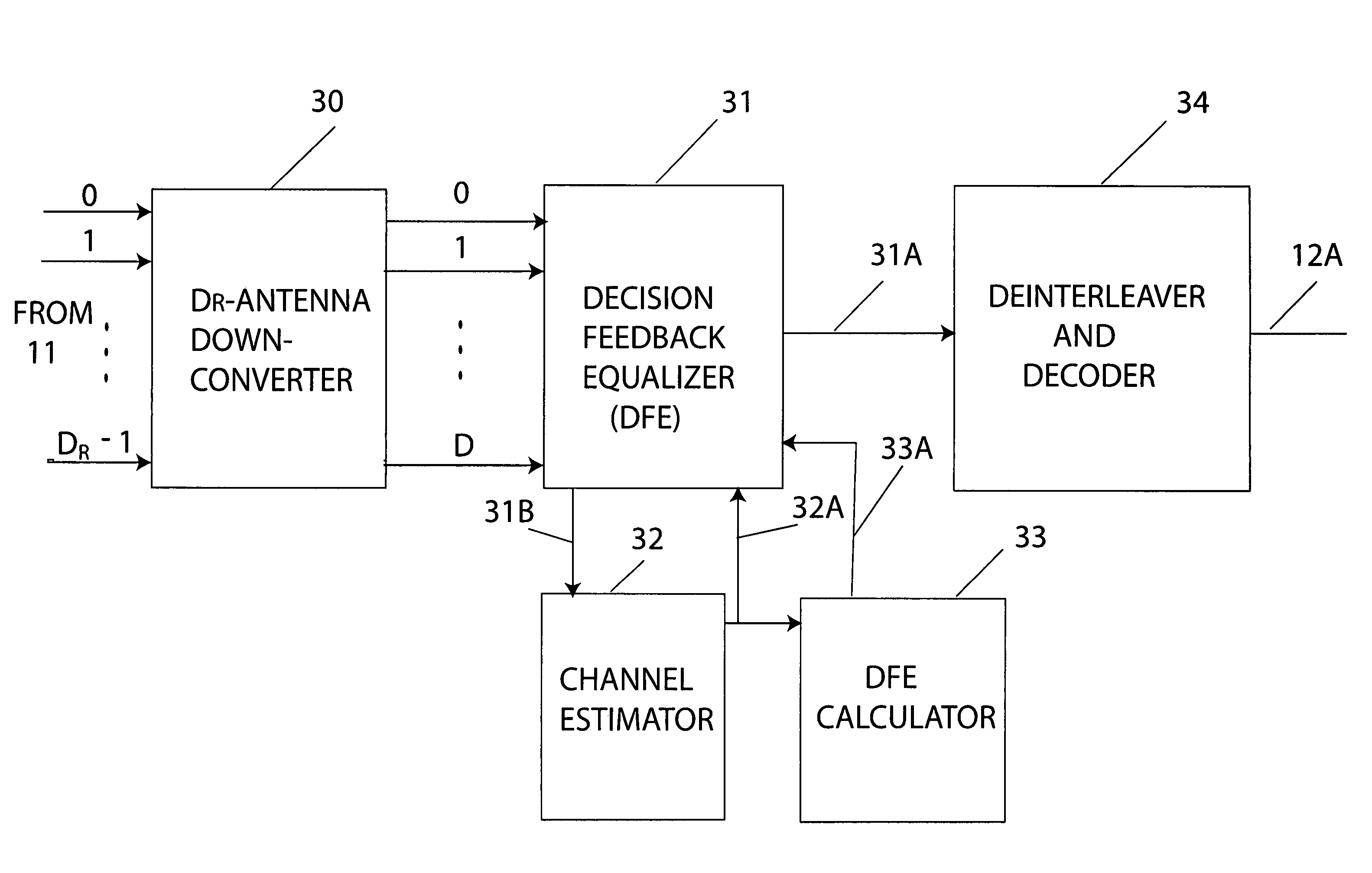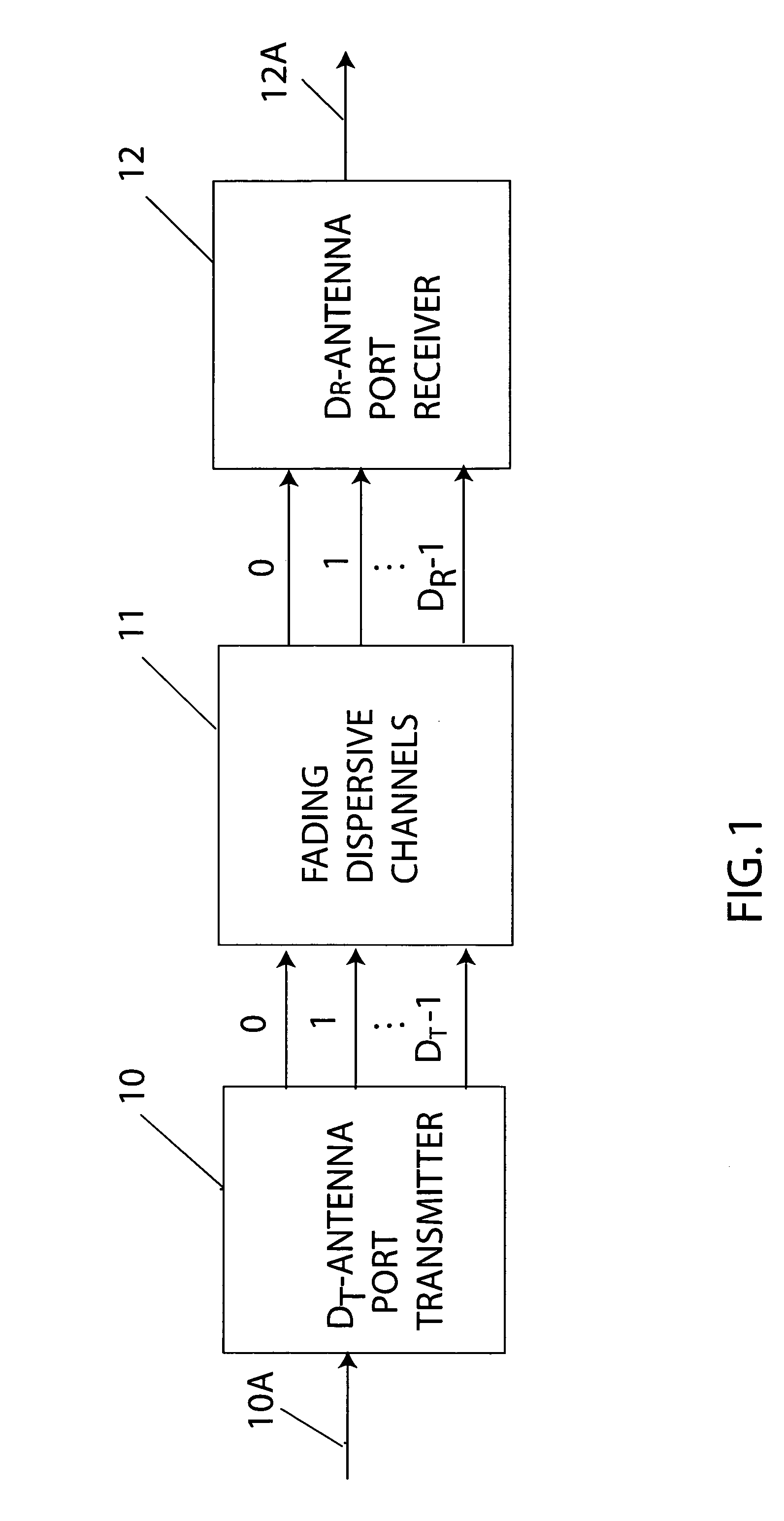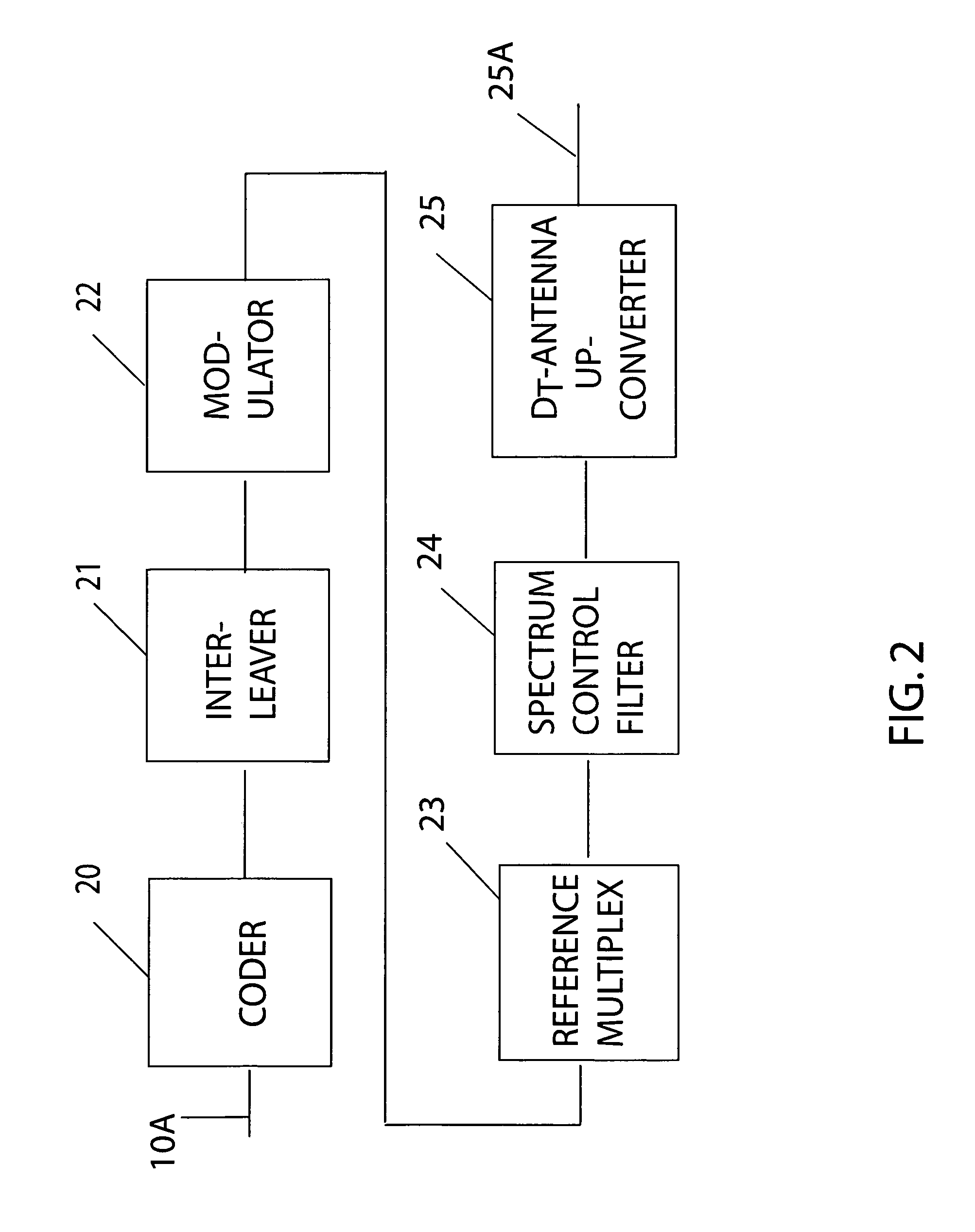Technique for adaptive equalization in band-limited high data rate communication over fading dispersive channels
a high data rate communication and channel technology, applied in diversity/multi-antenna systems, digital transmission, amplitude demodulation, etc., can solve the problems of dominated modem complexity in this application, weak signal-to-noise ratio conditions also often require additional redundant, and data communication in systems where channel conditions include time-varying reflections and/or scattering of transmitted signal waves is generally more difficult, etc. , to achieve the effect of high data rate communication, small reference overhead in the invention
- Summary
- Abstract
- Description
- Claims
- Application Information
AI Technical Summary
Benefits of technology
Problems solved by technology
Method used
Image
Examples
Embodiment Construction
[0041]A method of receiving and a receiver including a channel-estimating decision-feedback equalizer (CE-DFE) are described for use in communication links where high data rates with spectral limits are used to transmit digital data information over fading dispersive channels. An example communication link is shown in FIG. 1 where digital data information 10A is applied to a DT antenna-port transmitter 10. The transmitter 10 includes error correcting coding and interleaving of the digital data information. Interleaved and error-corrected coded data is modulated to provide information symbols. In a Space-Time Block Code (STBC) embodiment the information symbols are coded using a STBC codebook to produce coded symbols. In the trivial STBC embodiment there is no STBC and the coded symbols are equal to the information symbols. The coded symbols are then time division multiplexed with reference symbols to provide data symbols with data rate 1 / T. The data symbols are filtered, RF converte...
PUM
 Login to View More
Login to View More Abstract
Description
Claims
Application Information
 Login to View More
Login to View More - R&D
- Intellectual Property
- Life Sciences
- Materials
- Tech Scout
- Unparalleled Data Quality
- Higher Quality Content
- 60% Fewer Hallucinations
Browse by: Latest US Patents, China's latest patents, Technical Efficacy Thesaurus, Application Domain, Technology Topic, Popular Technical Reports.
© 2025 PatSnap. All rights reserved.Legal|Privacy policy|Modern Slavery Act Transparency Statement|Sitemap|About US| Contact US: help@patsnap.com



